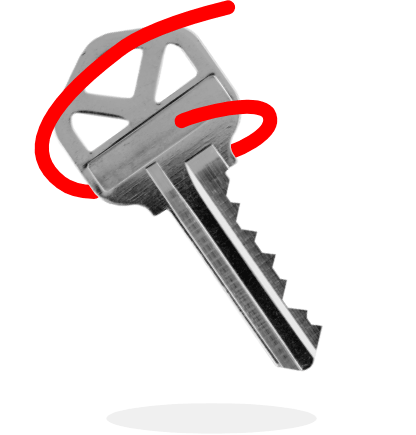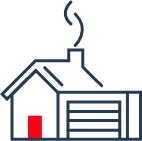For many, buying a home symbolizes stability, success, and building a future. But lately, homeowners nationwide have grappled with an unsettling trend – increasing homeowners insurance premiums.
For some, these rising costs might feel like an unexplained burden. However, there's a specific reason behind it that often goes unnoticed by the average homeowner: rising reinsurance costs.
Reinsurance directly impacts the price of your homeowners insurance, which is a fundamental part of buying or maintaining a home. But what exactly is reinsurance, and why are its skyrocketing costs making homeownership more expensive? Let's unpack the issue and explore what you, as a homeowner, can do to tackle this challenge.
WHAT IS REINSURANCE?
To understand reinsurance, think of it as insurance for insurance companies. When you purchase a homeowners insurance policy, the insurer agrees to cover damages or losses resulting from hazards like storms, fires, or other disasters. But what happens if a catastrophic event causes an enormous wave of claims all at once? The insurance company might not have the funds to pay everyone. That's where reinsurance comes in.
Reinsurance allows insurers to transfer some of the financial risk to larger, specialized reinsurers, which act as a safety net. For instance, in the aftermath of events like Hurricane Ian or California wildfires, reinsurance ensures that insurance companies can still cover claims, even if the damage totals billions of dollars.
While this system keeps the insurance industry stable, the rising cost of reinsurance is now being passed down to consumers, making an already expensive housing market even tougher to navigate.
WHY REINSURANCE COSTS ARE RISING
The cost of reinsurance is determined by a mix of factors, including the frequency and severity of catastrophic events, market conditions, and global trends. Here are a few reasons why these costs have been spiking:
1. An Increase in Severe Weather Events
Over the past decade, natural disasters have grown more frequent and more intense. NOAA reported that the U.S. experienced 18 separate billion-dollar disasters in 2022 alone, ranging from hurricanes to extreme droughts. Each of these events triggered substantial insurance claims, ultimately increasing the demand for reinsurance.
More claims also mean higher reinsurance premiums for insurers, as reinsurers adjust their pricing to account for the rising losses. These higher costs make their way down the chain to homeowners.
2. Inflation & Rising Construction Costs
The broader economic landscape is also fueling higher reinsurance costs. Inflation has pushed up the price of materials and labor in the construction industry, making it more expensive to rebuild homes after disasters. Reinsurers have responded by charging insurers more to reflect the increased cost of rebuilding.
3. Global Factors
Reinsurance is a global market. Devastating disasters in other parts of the world, like floods in Europe or typhoons in Asia, still impact pricing here in the United States. Since reinsurers operate on a global scale, they adjust their premiums to cover risks worldwide, and U.S. homeowners end up feeling the ripple effects.
4. Higher Risk in Vulnerable Areas
Certain regions in the U.S., particularly coastal areas or wildfire-prone states, pose a higher risk of disasters. For homeowners in these areas, the impact of rising reinsurance costs is even steeper. Insurers working in these high-risk zones rely heavily on reinsurance. When those costs go up, it often results in faster premium increases for residents.
HOW RISING REINSURANCE COSTS IMPACT YOUR WALLET
Rising reinsurance costs are a critical factor in why many homeowners are seeing their insurance premiums climb. According to a recent report by the Insurance Information Institute, homeowners insurance premiums have increased by an average of 12% per year in high-risk states like Florida, California, and Texas. Even in areas considered low-risk, homeowners are seeing their rates increase by 5–7% annually.
For new buyers, higher insurance costs mean additional hurdles to homeownership. Mortgage lenders often require borrowers to carry homeowners insurance. If your premiums are higher, it reduces how much house you can afford overall.
For existing homeowners, increased insurance rates can stretch budgets thin. And while skipping insurance might seem like a tempting way to save, it's almost always a bad idea. Not only does it leave your home unprotected, but most lenders won't allow you to forgo coverage.
WHAT CAN HOMEOWNERS DO?
If rising insurance costs are eating into your budget, there are steps you can take to manage the burden. Here's how you can help keep your premiums in check:
1. Shop Around for Better Rates
Don't settle for the first quote you get. Insurance premiums can vary significantly between providers, so investing time to compare rates could reveal savings. Keep in mind, however, that the cheapest option isn't always the best. Look for policies that provide sufficient coverage for your local risks.
2. Harden Your Home Against Disasters
Taking proactive measures to reduce the risk of damage can either lower your premiums or earn you discounts. For instance, upgrading to impact-resistant windows, reinforcing your roof, or clearing vegetation around your property for wildfire protection can make a difference.
3. Increase Your Deductible
Opting for a higher deductible could lower your annual premium. Just make sure you have enough savings set aside to cover the higher out-of-pocket expense if disaster strikes.
4. Ask About Discounts
Many insurers offer discounts for actions such as bundling policies, installing security systems, or maintaining a claim-free record. Check with your provider to see what options are available.
5. Monitor Legislation & Policies
Be aware of how state and federal policies might impact insurance rates in your area. For example, states like Florida have introduced programs to stabilize insurers and encourage competition, which can help mitigate premium increases.
The rising cost of reinsurance is a complex issue shaped by climate, economic changes, and global trends. While individual homeowners can't control these factors, understanding why premiums are climbing can empower you to make smarter financial decisions.
Homeownership is more than just a dream for millions of Americans – it's a way of life. By staying informed and taking practical steps to reduce costs, you can protect your home, your budget, and your future. Rising premiums may not be entirely avoidable, but they don't have to derail your financial stability.
If you need help finding the best homeowners insurance coverage for the best price, start by speaking to a SimplyIOA agent at 833.872.4467 or get a homeowners insurance quote online now.











